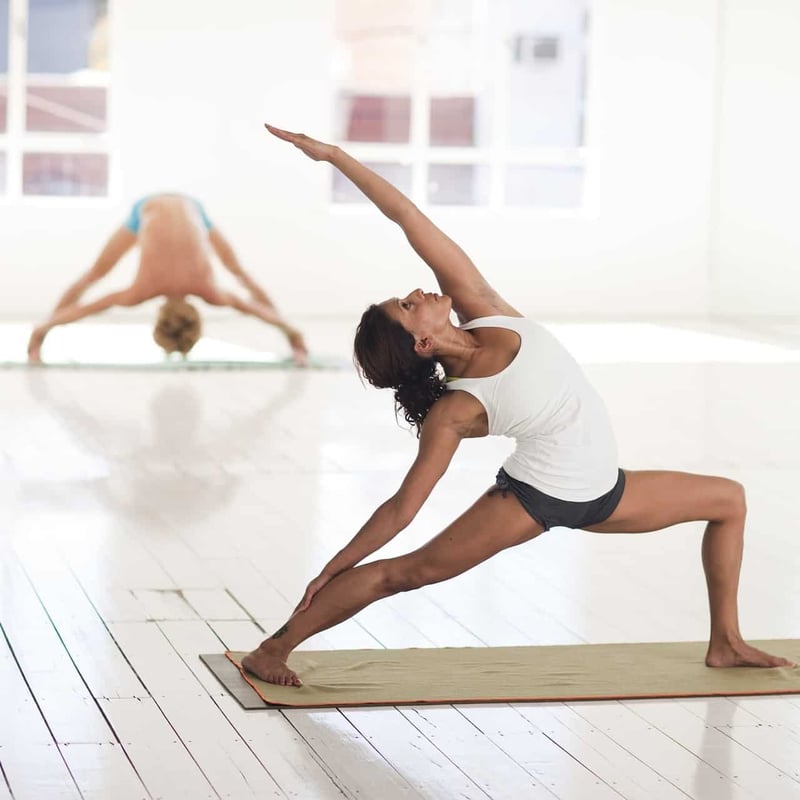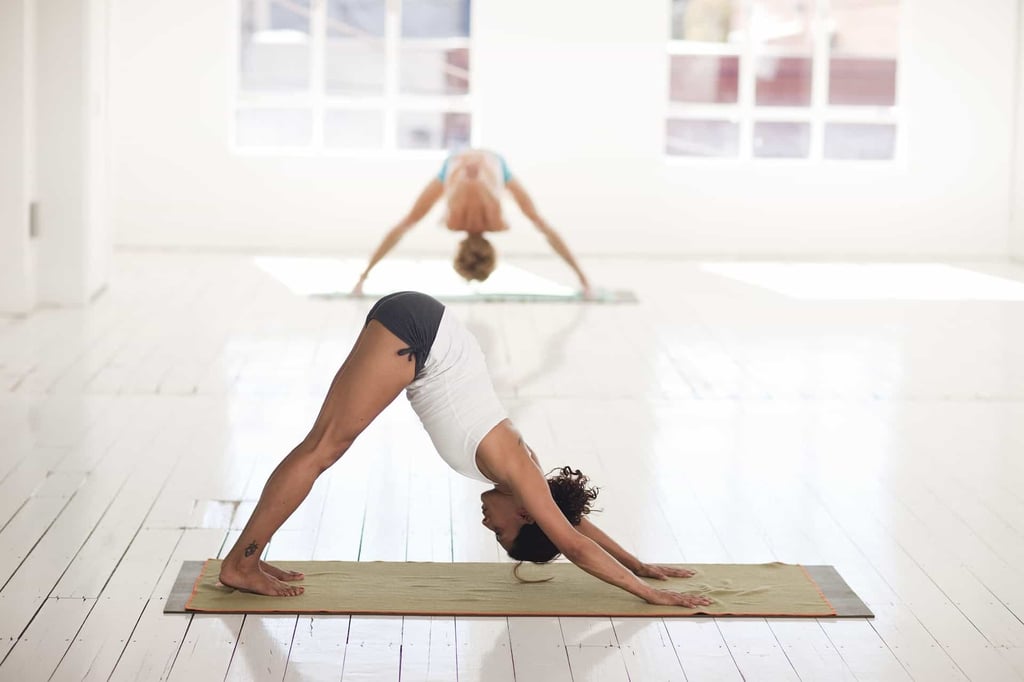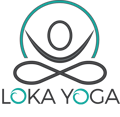Last updated on February 15th, 2023 at 04:21 pm
Yin Yoga vs Vinyasa
Yin Yoga vs Vinyasa
The beauty of yoga is that it comes in so many different styles, and all of them provide impeccable healing and mindfulness. However, every style isn’t perfectly fit for everyone! While some yoga styles focus on dynamic movement, others centre on gentle stretches and seated poses. Because of this, you need to choose wisely which style to practise so that it can be compatible with your lifestyle.
Today, we would like to differentiate two yoga practices that have taken the world by storm – Yin Yoga and Vinyasa. We will go into detail about both of them, covering their origin, differences and the benefits of these stellar practices. And, hopefully, you’ll opt for the one that works best for you!

The Difference Between Yin Yoga And Yang Yoga
As you’re probably aware, yoga is based on the laws of spirituality – which we have covered in our blog! The 12th law states that everything around us consists of two primary energies – feminine and masculine. In terms of the practice, there are two types of it – Yin Yoga and Yang Yoga. Yang-style yoga focuses on dynamic movements and stable standing positions, while the latter mainly offers on-the-ground seated positions intertwined with delicate holds and stretches. From the description alone, you can see that there’s a huge difference between the two, as they are practised dissimilarly and offer distinctive benefits. However, that doesn’t mean they don’t compliment one another…but we’ll get more into that later!

Yin Yoga
Yin Yoga is inspired by old Chinese Taoist practices – sometimes referred to as Taoist Yoga or Tao Yin. They have been part of Kung Fu training for ages and were done by holding certain stretches for long periods. Paulie Zink was the first person that introduced Tao Yin to the western world around the 1970s, where he combined it with elements of Hatha Yoga. However, his student, Paul Grilley, is considered the mind behind Yin yoga, as he merged Zink’s practices, Hatha Yoga and the Chinese system of meridians into a completely new practice!
As previously mentioned, yin yoga focuses on practising at a much slower pace than yang yoga. The poses are usually done in either a seated or supine position and are held for anywhere from 2 to 20 minutes. Our bones and joints are far less flexible than other body parts – by practising yin, you can apply pressure on them delicately and gently, improving their health and growth. When combined with a yoga breathing technique, you can achieve a truly meditative experience!
This restorative practice comes with a handful of benefits! Apart from increasing your range of motion, this yoga style can help stimulate positive and calm energy and further enhance our ability to stay in the present and enjoy our experiences. It can also help ease muscle pain and aches, especially on the fascia. We recommend yin yoga to people who live a fairly fast-paced life or office workers who spend a lot of time in front of their desks with their shoulders hunched and slouched over. Additionally, professional athletes can find great benefits in this specific style of yoga as it can release pressure and tension in the body.
Yang Yoga (Hatha, Vinyasa, Ashtanga, Power, Kundalini, Bikram)
Vinyasa is considered one of the most popular forms of Yang Yoga and has quite a rich history! It dates all the way back thousands of years to when Patanjali began creating his own discipline based on meditation and physical and mental conditioning. He attracted many students with his teachings, one of them being Krishnamacharya. Krishnamacharya’s students included BKS Iyengar and Sri Pattabhi Jois, who both then further improved the discipline by involving breathwork in movement instead of sitting still in one position. Fast forward to 1973, Norman Allan, an American yogi inspired by Jois, started promoting the practice of Vinyasa, thus achieving widespread success in Western territories.

Vinyasa represents a seamless flow of movement accompanied by your breath. In other words, you create the opportunity to “ride your breath” while focusing your mind and putting your body up for a challenge. It may take some time to perfect your vinyasa flow, as learning the poses while moving along with your breath can be challenging in the beginning. But once you achieve the perfect sync, you’ll end up with an indescribable experience – the dynamic movements will increase your circulation, strengthen your muscles and help you centre your mind.
Compared to yin yoga, vinyasa is much more fast-paced and perfect for people with a sedentary lifestyle or work in a job where they are sitting all day. The core of this form of yoga is much more active and repetitive – meaning that you may sometimes feel like you’re doing a physically demanding workout. However, don’t let this discourage you! On the contrary, Vinyasa can be highly beneficial for people who are generally restless and always feel the need to move. By doing a series of movements with controlled breathing, you’ll be helping your mind become more focused, thus making you feel more at ease!


How Do Yin Yoga And Vinyasa Complete Each Other
As you can see, these yoga practices are miles apart from each other, but they are actually quite complimentary! As the 12th spirituality law suggests, the yin-yang energy coexists together – when paired, they achieve perfect harmony. This applies to yin yoga and vinyasa as well! While yin is more passive and focuses on flexibility and creating a positive energy flow, vinyasa helps your body be more energetic and further invigorates your mind. You can find a lot of classes that offer yang yoga, which incorporates yin elements in both the beginning and the end. By doing so, your mind and body are fully stimulated, thus achieving an ideal tranquil state.
This brings us to the end of our informational piece on Yin Yoga and Vinyasa. Hopefully, you know by now which is best for you. But in essence, it wouldn’t hurt to try both of them! Both can work to suit your different needs. If you’re looking for online yoga teachings from professionals, you can always check out our site. We will help you become an internationally qualified teacher at your own pace!
